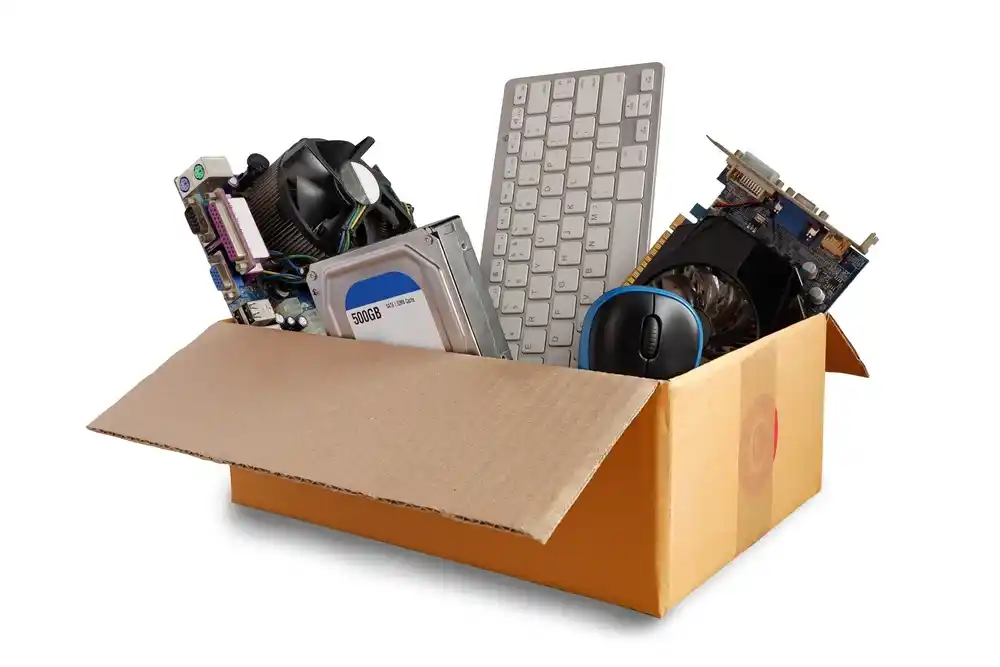Introduction
Definition of IT Recycling
IT recycling refers to the process of repurposing, refurbishing, and safely disposing of outdated or non-functional IT equipment, including computers, servers, mobile devices, and other electronic components. This practice ensures that valuable materials are recovered while minimizing the environmental and health risks associated with improper disposal.
Importance of Addressing E-Waste
With the rapid advancement of technology, electronic devices quickly become obsolete, leading to a surge in electronic waste. The environmental impact of electronic waste is significant, contributing to soil, air, and water pollution. Proper IT recycling not only helps in waste management but also conserves valuable resources and reduces the carbon footprint.
The Growing Problem of E-Waste
Statistics on Global E-Waste Generation
E-waste is one of the fastest-growing waste streams worldwide. According to the Global E-Waste Monitor, over 53.6 million metric tons of e-waste were generated in 2019, with projections indicating an increase to 74 million metric tons by 2030. Unfortunately, only a small percentage of this waste is properly recycled.
Environmental and Health Impacts of Improper Disposal
Improper disposal of e-waste leads to significant environmental and health hazards. When electronic waste is dumped in landfills or incinerated, harmful chemicals such as lead, mercury, and cadmium leach into the environment, causing soil and water contamination. Moreover, the health risks of improper e-waste disposal include respiratory issues, neurological damage, and increased cancer risks among individuals exposed to toxic materials.
Understanding IT Recycling
Definition and Scope
IT recycling encompasses various activities, including reusing functional components, refurbishing outdated devices, and extracting valuable metals from electronic waste. This process supports sustainable electronics recycling by ensuring that electronic components are responsibly managed and reintegrated into the supply chain.
Difference Between IT Recycling and General Recycling
Unlike general recycling, which focuses on materials like paper, glass, and plastic, IT recycling involves the specialized handling of electronic waste to recover valuable elements such as gold, silver, and rare earth metals. This process requires advanced technologies and skilled labor to maximize material recovery and minimize environmental harm.
Benefits of IT Recycling
Conservation of Natural Resources
Mining for raw materials like copper, gold, and rare earth metals requires extensive energy and causes environmental destruction. E-waste recycling solutions help recover these materials, reducing the need for further mining and conserving natural resources.
Reduction of Environmental Pollution
Recycling IT assets reduces the release of toxic substances into the environment, lowering pollution levels in water bodies, soil, and air. Innovations in e-waste recycling technologies have improved the efficiency of material extraction, making the process more environmentally friendly.
Energy Savings
Recycling electronic materials requires significantly less energy compared to manufacturing them from raw materials. This energy efficiency contributes to lowering global carbon emissions and mitigating climate change effects.
Processes Involved in IT Recycling
Collection and Transportation
E-waste is collected from businesses, consumers, and recycling centers, then transported to specialized recycling facilities.
Sorting and Dismantling
Devices are manually or mechanically sorted and dismantled to separate reusable components and hazardous materials.
Material Recovery
Advanced techniques, such as smelting and chemical processing, are used to extract valuable metals and recycle plastics.
Challenges in IT Recycling
Technological Challenges
Recycling complex IT products requires specialized technologies, which are expensive and not widely available.
Economic Factors
The profitability of IT recycling depends on the fluctuating market demand for recycled materials.
Informal Recycling Sectors
In many developing countries, informal recycling methods expose workers to hazardous chemicals without proper safety measures.
Global IT Recycling Initiatives
Overview of Successful Programs
Countries like Japan, Germany, and Sweden have implemented global e-waste management strategies that ensure responsible IT asset disposition and efficient recycling.
Case Studies from Different Countries
- Japan: Advanced electronic recycling facilities focus on material recovery and zero-waste policies.
- Germany: Strict e-waste regulations have led to high recycling rates.
- United States: Various corporate e-waste recycling programs ensure responsible disposal of IT assets.
Role of Legislation in Promoting IT Recycling
International Treaties and Agreements
Agreements like the Basel Convention regulate the transboundary movement of hazardous e-waste to prevent illegal dumping.
National Laws and Regulations
Many countries have enacted laws mandating legislation on electronic waste disposal, requiring manufacturers to take responsibility for recycling their products.
Corporate Responsibility in IT Recycling
Importance of Corporate Policies
Corporations play a crucial role in IT asset disposition, ensuring their outdated equipment is either recycled or reused instead of ending up in landfills.
Examples of Companies with Effective Recycling Programs
Tech giants like Apple, Dell, and HP have robust corporate e-waste recycling programs, offering take-back schemes and refurbishing services.
Consumer Awareness and Participation
Importance of Consumer Involvement
Consumers can make a significant impact by properly disposing of their electronic waste and supporting sustainable products.
Ways Consumers Can Contribute
- Donating functional electronics to charities
- Using manufacturer take-back programs
- Choosing eco-friendly electronic brands
Innovations in IT Recycling Technologies
Advances in Recycling Processes
New techniques, such as AI-based sorting and robotic disassembly, have improved the efficiency of e-waste recycling.
Future Trends and Possibilities
With continued research, future innovations in e-waste recycling technologies will make the process more cost-effective and environmentally friendly.
Economic Aspects of IT Recycling
Job Creation
The recycling industry generates employment opportunities, particularly in processing and refurbishing sectors.
Market for Recycled Materials
Recycled metals and components are valuable in manufacturing, driving economic growth.
Environmental Benefits of IT Recycling
Reduction in Pollution
Recycling IT waste prevents toxic chemicals from entering ecosystems.
Preservation of Ecosystems
Minimizing e-waste reduces habitat destruction caused by mining for raw materials.
Health Benefits of Proper IT Recycling
Reduction in Exposure to Hazardous Materials
Safe recycling practices prevent workers and communities from exposure to harmful toxins.
Improved Public Health Outcomes
Proper disposal of electronic waste leads to healthier environments and reduced disease rates.
Future Outlook for IT Recycling
Predictions for E-Waste Generation
With increasing digitalization, e-waste volumes are expected to grow. Strengthening global e-waste management strategies is crucial for sustainability.
Strategies to Improve Recycling Rates
- Expanding consumer electronics recycling initiatives
- Implementing stronger legislation on electronic waste disposal
- Investing in innovations in e-waste recycling technologies
Conclusion
Summary of Key Points
IT recycling is essential for reducing e-waste, conserving resources, and protecting public health. Governments, corporations, and individuals must collaborate to improve recycling rates and promote sustainable practices.
Call to Action for Stakeholders
Consumers should actively participate in consumer electronics recycling initiatives, while businesses must implement responsible IT disposal programs. Policymakers should enforce stricter regulations to ensure compliance with global e-waste management strategies.
Frequently Asked Questions (FAQs)
1. What is IT recycling?
IT recycling is the process of repurposing, refurbishing, or safely disposing of old electronic devices to reduce e-waste and protect the environment.
2. Why is e-waste harmful?
E-waste contains toxic materials like lead and mercury, which can pollute the air, soil, and water, posing serious health risks.
3. How do companies recycle IT equipment?
Companies use corporate e-waste recycling programs to refurbish, resell, or safely dismantle old electronics for material recovery.
4. What are global e-waste management strategies?
Countries implement laws, recycling programs, and public awareness campaigns to reduce e-waste and promote responsible disposal.
5. How can I recycle my old electronics?
You can use manufacturer take-back programs, donate working devices, or drop off e-waste at certified recycling centers.



